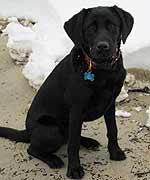
SUNDAY, Jan. 6 (HealthDay News) — With the arrival of winter, dog owners need to be aware of how to keep their canine friends comfortable and safe, an expert says.
“A general rule of thumb is if it is too cold for you outside, it is too cold for your dog,” Susan Nelson, a clinical associate professor and veterinarian at the Kansas State University College of Veterinary Medicine’s Pet Health Center, said in a university news release.
Several factors, such as size, help some dogs tolerate the cold better than others.
“Small stature and short coats, such as with a Chihuahua, make dogs less tolerant of cold weather. Some of these dogs may not even tolerate cooler temperatures that are still above freezing for very long,” Nelson said.
“Larger body mass and longer, plusher coats allow dogs to tolerate lower temperatures for a longer duration — think Siberian husky,” she added.
Giving your dog enough time to get used to colder temperatures is a good idea. Being exposed to a gradual reduction in temperature allows your dog to develop a protective winter coat and adjust to the colder conditions.
While coats, sweaters and boots can give dogs added protection, they also have some disadvantages, Nelson said.
“Watch for choking hazards, such as buttons, on coats and sweaters,” she advised. “Ensure they are made of breathable fabrics and that the fabric doesn’t irritate the dog. They should only be worn when supervised as the dog could get caught up in them. Also, if the apparel gets wet, it can promote hypothermia that results from chilling caused from the body being in contact with the cold, wet fabric.”
Boots can keep snow and ice away from paws, but owners need to make sure they fit correctly, can be put on easily and stay on, and have good traction, Nelson said.
More information
The American Kennel Club has more about winter care for dogs.

